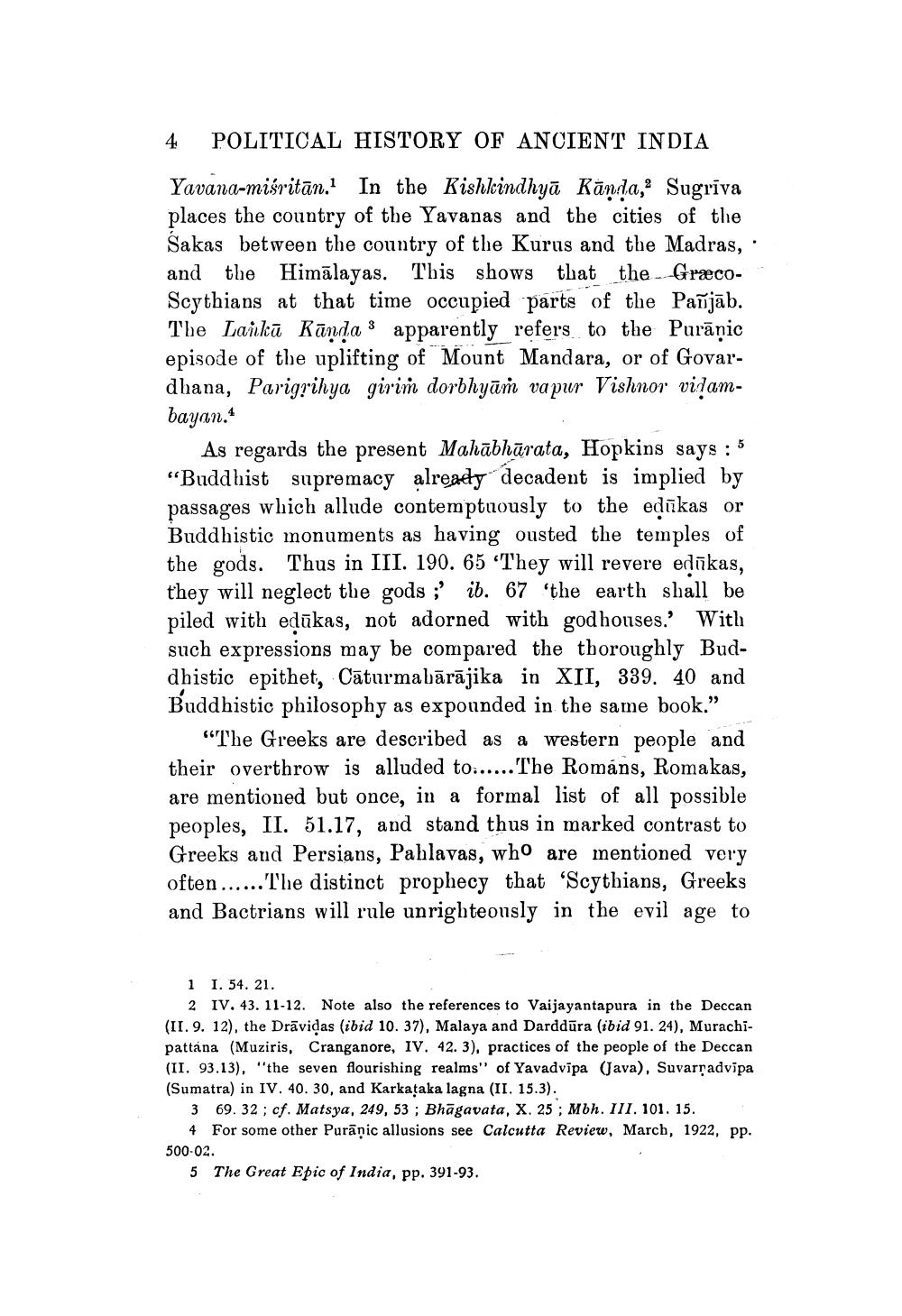________________
4
POLITICAL HISTORY OF ANCIENT INDIA
Yavana-misritān. In the Kishkindhyā Kānda, Sugrīva places the country of the Yavanas and the cities of the Sakas between the country of the Kurus and the Madras, · and the Himālayas. This shows that the GræcoScythians at that time occupied parts of the Pañjāb. The Laikā Kānda s apparently refers to the Purāņic episode of the uplifting of Mount Mandara, or of Govardhana, Parigrihya girim dorbhyām vapur Vishnor vidambayan.
As regards the present Mahābhārata, Hopkins says : 5 “Buddhist supremacy already decadent is implied by passages which allude contemptuously to the edūkas or Buddhistic monuments as having ousted the temples of the gods. Thus in III. 190.65 "They will revere edūkas, they will neglect the gods ;' ib. 67 "the earth shall be piled with edūkas, not adorned with godhouses.' With such expressions may be compared the thoroughly Buddhistic epithet, Cāturmalārājika in XII, 339. 40 and Buddhistic philosophy as expounded in the same book.”
"The Greeks are described as a western people and their overthrow is alluded to...... The Románs, Romakas, are mentioned but once, in a formal list of all possible peoples, II. 51.17, and stand thus in marked contrast to Greeks and Persians, Pahlavas, who are mentioned very often ... ... The distinct prophecy that 'Scythians, Greeks and Bactrians will rule unrighteously in the evil age to
1 I. 54. 21.
2 IV. 43. 11-12. Note also the references to Vaijayantapura in the Deccan (II. 9. 12), the Drāvidas (ibid 10. 37), Malaya and Darddūra (ibid 91. 24), Murachipattana (Muziris, Cranganore, IV. 42. 3), practices of the people of the Deccan (II. 93.13). "the seven flourishing realms" of Yavadvīpa (Java), Suvarradvīpa (Sumatra) in IV. 40. 30, and Karkataka lagna (II. 15.3).
3 69. 32; cf. Matsya, 249, 53; Bhagavata, X. 25; Moh. III. 101. 15.
4 For some other Purānic allusions see Calcutta Review, March, 1922, pp. 500-02.
5 The Great Epic of India, pp. 391-93.




